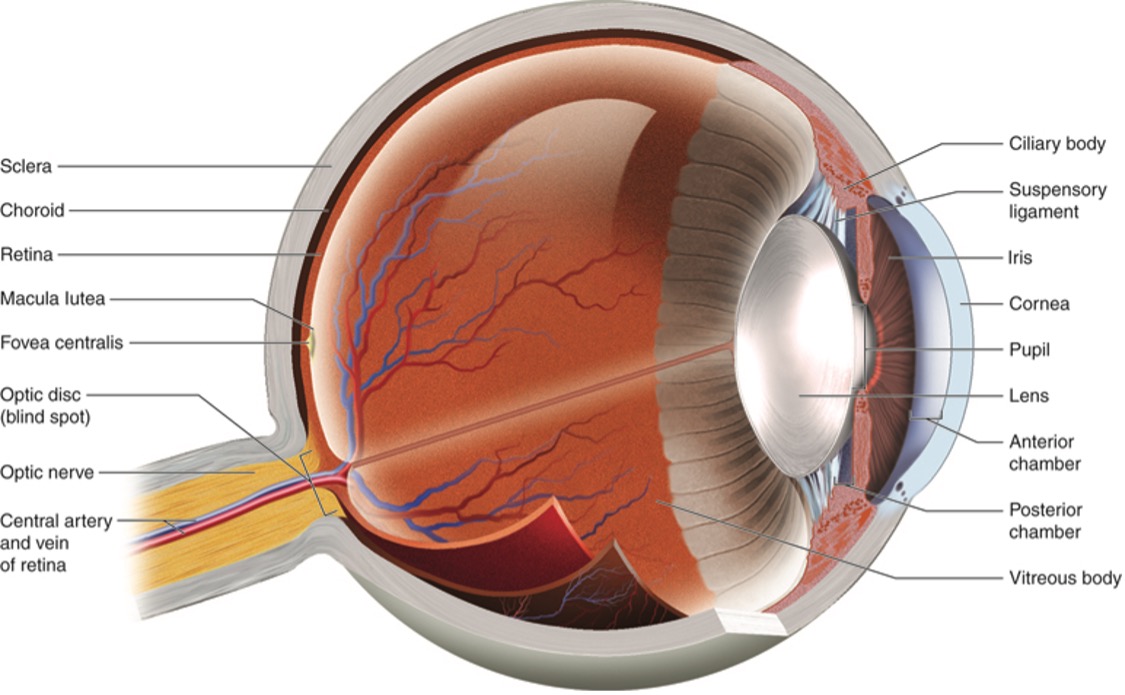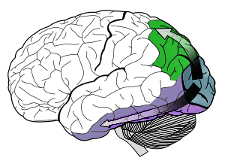Module 3: Vision
The Process of Seeing
The process of seeing is complex, but the way you see consists of the eyes and the brain working together to gather visual information and create meaning. The eyes and optic nerves are referred to as the optical portion of the visual system, while the visual processing areas of the brain are referred to the cortical or cerebral part of the visual system.

The above diagram shows a cross-section of the human eye.
The eyes consist of the external structures such as eyelids and the sclera (white part of the eye) that help protect the eye, and the structures within the eye that bend and focus light. They then convert it to electronic signals to be sent to the brain.
The anterior or front of the eye contains the cornea that begins to focus light, the iris that controls the amount of light entering the eye, the lens that fine-tunes how light is focused, and related structures.
The posterior or back of the eye consists of the retina that receives light signals and converts them into electronic signals, and the optic nerve that sends the signals to the brain where they are given meaning.
The electrical impulses generated in the retina travel along the optic nerve to the various visual processing centres of the brain, where the stream of nerve impulses is then converted into meaningful images.
It is the processing that occurs within the brain that allows you to automatically understand and distinguish things like foreground from background, understand depth and movement, and to recognize and differentiate between objects in the environment.

This diagram shows the primary visual cortex and its location in the occipital lobe of the brain.